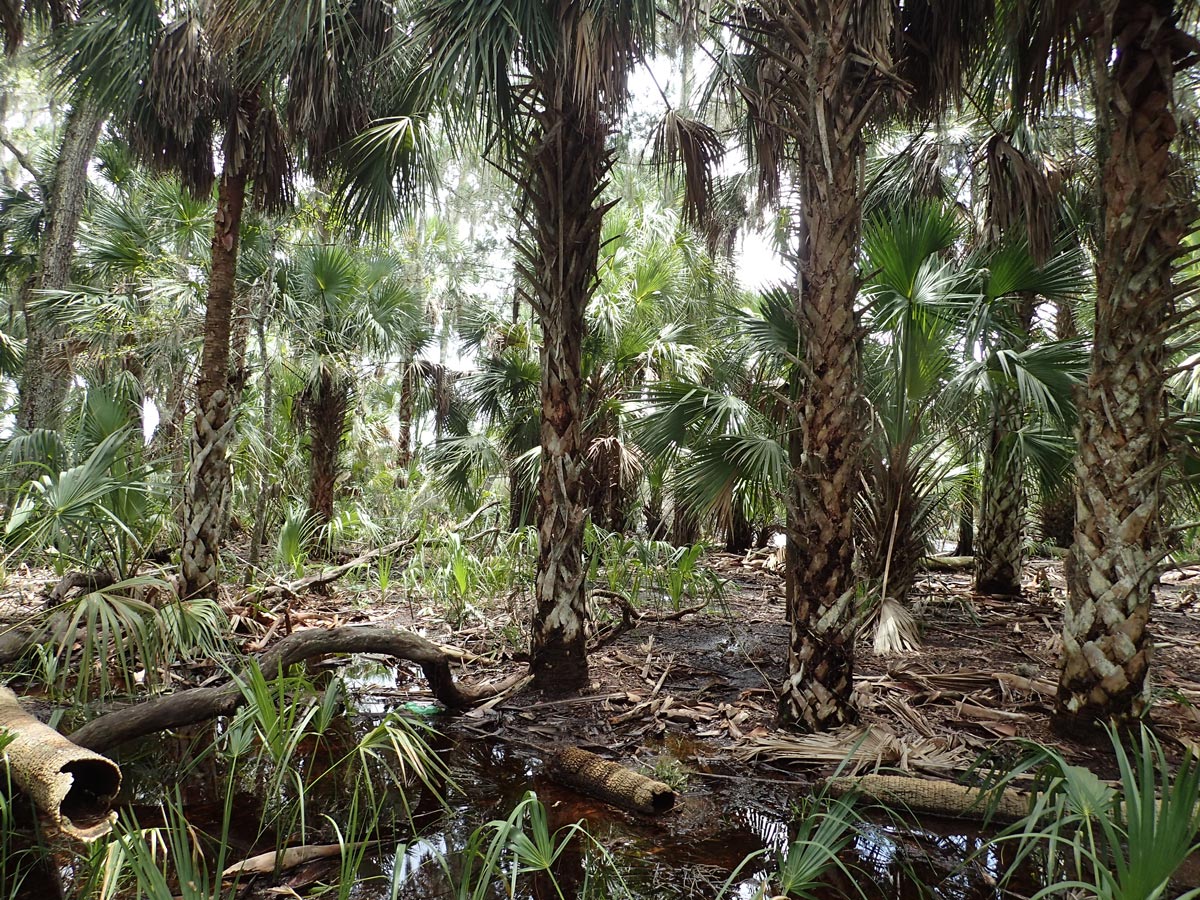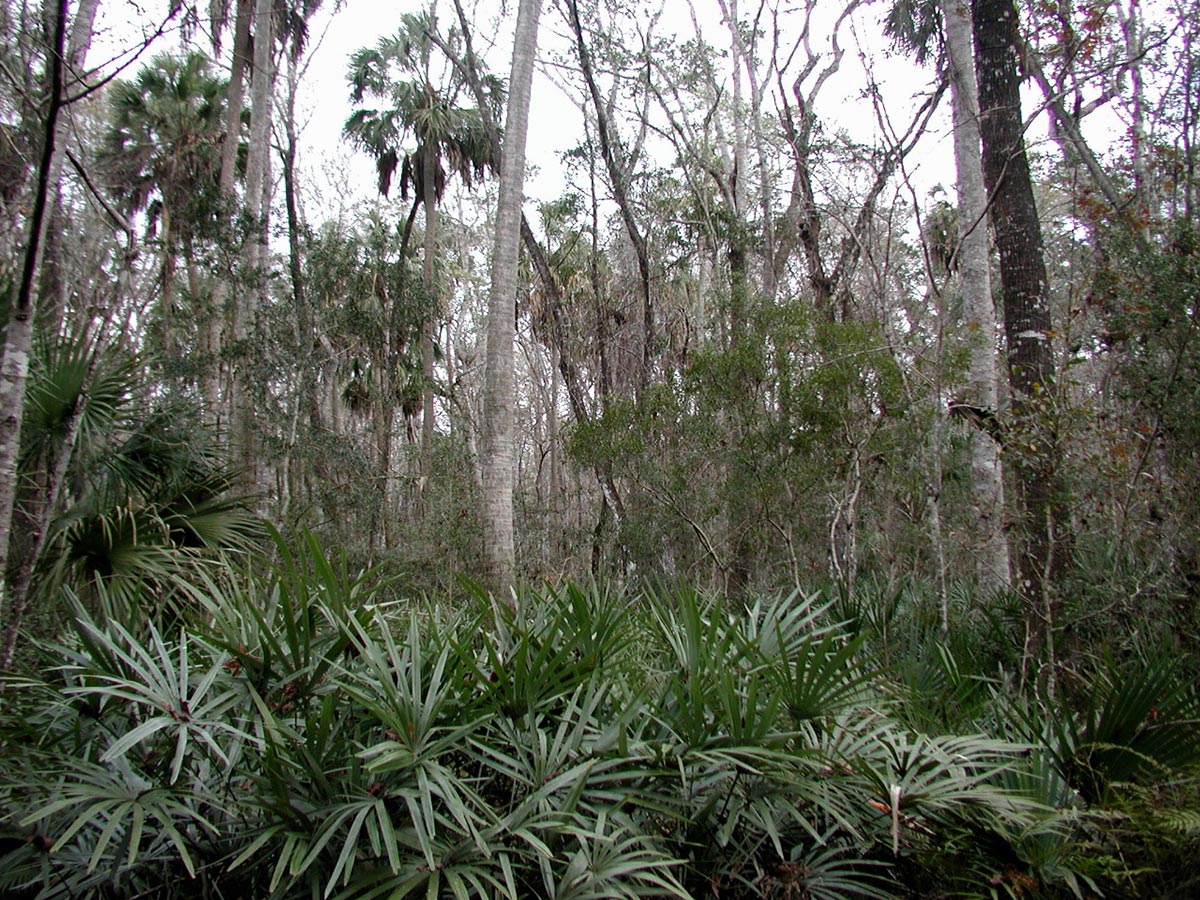
The preserve protects some of the last undisturbed remnants of the once great Gulf Hammock. The old-growth hydric hammock was 100,000 acres in size stretching from Yankeetown to Cedar Key between the Suwannee and Withlacoochee rivers.
It is estimated that 80% of the Gulf Hammock was clear-cut for conversion to loblolly pine plantations between 1970 and the mid-1980s. Much of what remained was sold to the state of Florida to form the core of Waccasassa Bay Preserve State Park.

Hydric hammock has an abundance of red cedars and cabbage palms – Florida’s state tree – and unusually wet (and salty!) soil conditions. It’s home to rare species, including corkwood, Florida pinkroot and coralberry, and it would be special site to see the large purple-to-black indigo snake or a Florida black bear in this once vast forest.
Another unique botanical feature of the preserve is the number of plant species occurring at either the northern or southern limits of their ranges. A floristic survey of Waccasassa Bay Preserve State Park has documented 29 species that occur at or near their contiguous southern limit in Florida. Likewise, 45 species were documented that occur at or near their contiguous northern limit in Florida.
Overall, the preserve is recognized as one of the state's truly unique natural systems. The area attracts much research interest because of the geographic isolation of its wildlife populations and its abundance of rare and threatened plant and animal species in ...the Real Florida.
